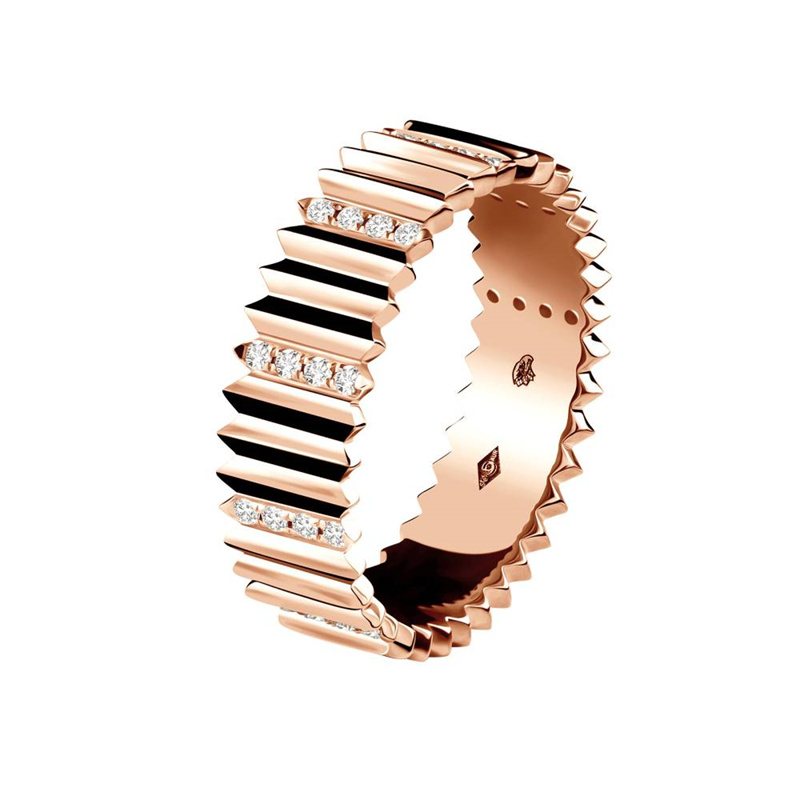Customizing Rings: Brass vs. Copper – Key Differences and Considerations
Introduction
When customizing rings, the choice of metal significantly impacts the ring’s appearance, durability, cost, and wearability. Two popular non-precious metal options are brass (an alloy of copper and zinc) and pure copper. While both have a warm, reddish-gold tone, they differ in composition, strength, maintenance, and skin sensitivity.
This 5,000-word guide explores the key differences between brass and copper rings, helping you make an informed decision based on design preferences, budget, and long-term wearability.
1. Understanding Brass and Copper
1.1 What Is Brass?
- Composition: 60-80% copper + 20-40% zinc (sometimes with lead or tin)
- Properties:
- Gold-like appearance (varies from reddish to yellowish)
- Stronger than pure copper (less prone to bending)
- Corrosion-resistant (but can tarnish)
- Affordable (cheaper than gold, silver, or platinum)
1.2 What Is Copper?
- Composition: 99.9% pure copper (sometimes alloyed with small amounts of other metals)
- Properties:
- Distinct reddish-brown color (develops a patina over time)
- Softer and more malleable (easier to shape but less durable)
- Naturally antimicrobial (used in medical applications)
- Highly conductive (used in electronics)
1.3 Key Differences at a Glance
| Feature | Brass | Copper |
|---|---|---|
| Composition | Copper + Zinc | Pure Copper (99.9%) |
| Color | Yellowish-gold to reddish-gold | Reddish-brown (develops patina) |
| Durability | Harder, more scratch-resistant | Softer, prone to dents/scratches |
| Tarnish Resistance | Tarnishes slower (due to zinc) | Oxidizes quickly (green patina) |
| Skin Reactions | May cause allergies (if nickel is present) | Can turn skin green (oxidation) |
| Cost | Slightly more expensive than copper | Very affordable |
2. Aesthetic Differences: Which Looks Better?
2.1 Brass Rings: Warm & Luxurious
- Resembles gold (popular for vintage and antique designs)
- Polished finish = shiny, jewelry-like appearance
- Matte or brushed finish = rustic, industrial look
2.2 Copper Rings: Earthy & Rustic
- Natural reddish-brown hue (popular in bohemian and artisanal designs)
- Develops a patina (darkens over time, giving an “aged” look)
- Can be polished to restore shine (but will re-oxidize)
Best For:
- Brass → Elegant, gold-like jewelry
- Copper → Organic, handcrafted, or steampunk styles
3. Durability & Wearability
3.1 Strength & Longevity
- Brass is stronger (better for everyday wear, less likely to bend)
- Copper is softer (may deform with heavy use, better for occasional wear)
3.2 Tarnish & Oxidation
- Brass: Tarnishes (darkens) but slower than copper; can be cleaned with lemon juice or baking soda.
- Copper: Oxidizes quickly (green/black patina); some people love the aged look, while others prefer polishing it regularly.
3.3 Skin Sensitivity & Allergies
- Brass: May contain nickel (can cause allergies for some). Hypoallergenic brass (nickel-free) is safer.
- Copper: Can leave a green stain on skin (harmless but may bother some wearers). A clear lacquer coating can prevent this.
4. Customization & Craftsmanship
4.1 Engraving & Detailing
- Brass: Easier to engrave (harder metal holds details well)
- Copper: Softer, so fine details may wear off faster
4.2 Plating Options
- Brass can be plated with gold or silver for a premium look.
- Copper is rarely plated (its natural color is part of its appeal).
4.3 Weight & Comfort
- Brass is heavier (feels more substantial).
- Copper is lighter (good for wide-band rings).
5. Maintenance & Care
5.1 Cleaning Brass Rings
- DIY Cleaner: Mix lemon juice + baking soda, scrub gently, rinse.
- Prevent Tarnish: Store in an airtight container with anti-tarnish strips.
5.2 Cleaning Copper Rings
- Restore Shine: Use ketchup (acid removes oxidation) or commercial copper polish.
- Embrace Patina: If you like the aged look, no cleaning is needed.
5.3 Protective Coatings
- Clear Lacquer: Prevents tarnish/green skin stains (but may wear off).
- Wax Sealant: Beeswax or jewelry wax can slow oxidation.
6. Cost Comparison
| Factor | Brass Ring Cost | Copper Ring Cost |
|---|---|---|
| Material Cost |
5–20 per ring |
3–15 per ring |
| Custom Engraving | + 10–50 |
+ 10–50 |
| Plating (Gold/Rhodium) | + 20–100 |
Rarely done |
| Handmade (Artisan) |
50–200+ |
30–150+ |
Verdict: Copper is slightly cheaper, but brass offers more durability and plating options.
7. Which Should You Choose?
✔ Choose Brass If You Want:
- A gold-like appearance without the high cost
- More durability for daily wear
- Options for gold/silver plating
✔ Choose Copper If You Want:
- A natural, rustic look with a living finish (patina)
- Lighter weight and softer feel
- Antimicrobial properties (ideal for sensitive skin)
Conclusion
Both brass and copper offer unique advantages for custom rings. Brass is more durable and versatile, while copper has a distinct, evolving patina. Your choice depends on:
- Aesthetic preference (gold-like vs. earthy)
- Lifestyle (daily wear vs. occasional)
- Budget (both are affordable, but copper is slightly cheaper)
For long-lasting, elegant rings, brass is the better choice. For artistic, organic designs, copper offers unmatched character.
